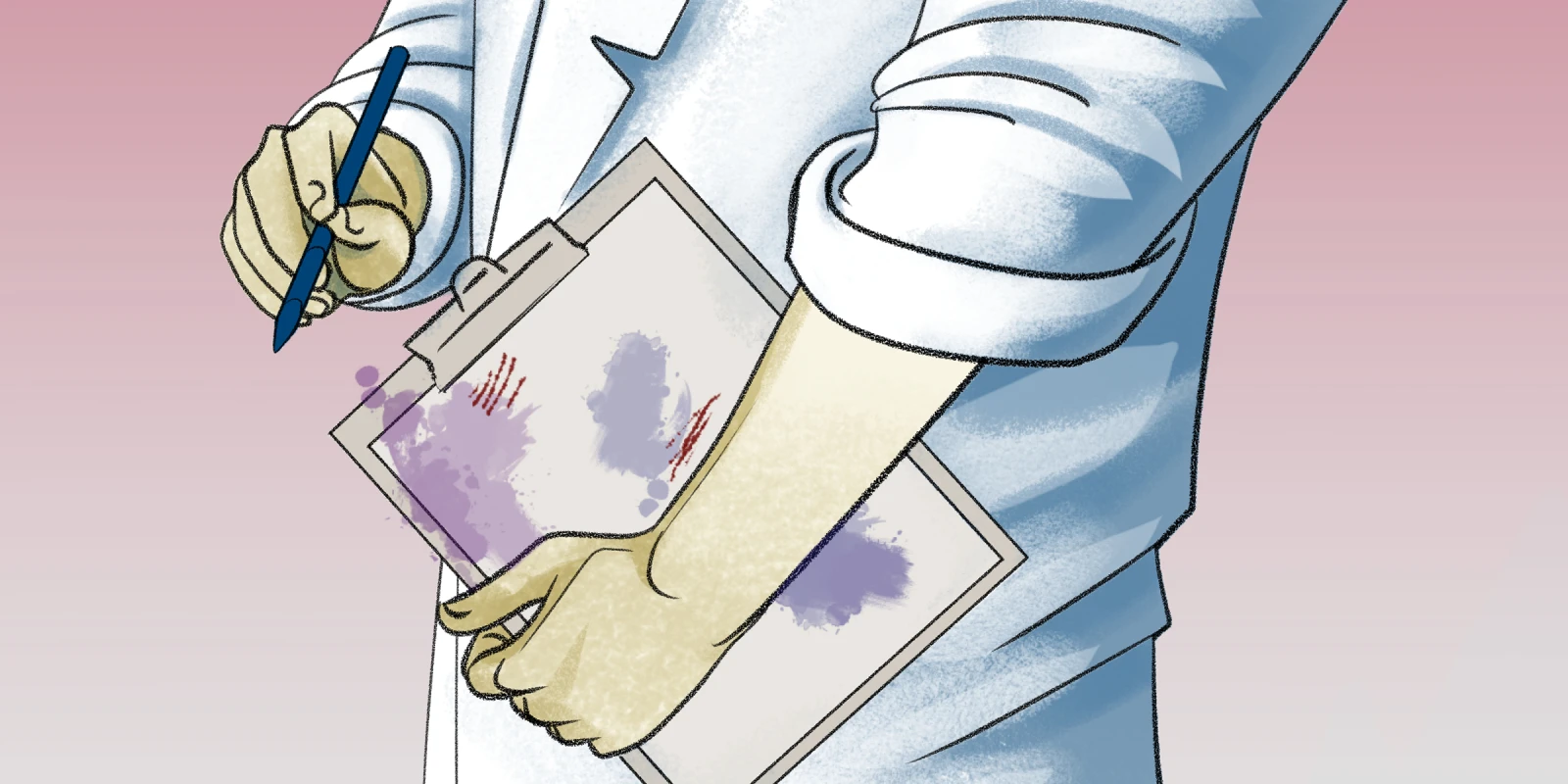
It was already dark when I headed in for the night shift. It smelled like spring was coming. I swiped my badge across the reader and the door swung open. I swallowed down that edgy feeling I always got at the beginning of a shift, plunging into the unknown.
The corridor leading up to the resident room was lined with a few stretchers, empty for now. The work room was narrow with a lone countertop and a white board with 26 numbered slots, each holding a clipboard. According the to board, most of the beds were filled, some marked “ready for discharge.” There were no signs of overflow, the steady sweat of running behind, of pressure. I was grateful.
The main ED buzzed with energy: heart monitor alarms beeping, babies crying, and fast-talking colleagues amped up on caffeine. A police officer stood in front of the nurses' station talking to an attending. A few feet away stood another officer next to a distraught teenage girl.
"Where's my boyfriend?" the girl called frantically, as she was being led away. Clearly, the tail end of some drama. Cringing, I turned my attention instead to bed three, where in sharp contrast, a young boy sat quietly on his mother’s lap, a mask filled with vapor stretched over his face. His mother held his hand, whispering to him. They looked peaceful. According to his clipboard, he was on his second neb treatment for a bad asthma flare. Looks can be deceiving. I wondered if there was room in the PICU tonight.
I looked up as Jeffrey loped toward me, grinning. Assuming that he was eager for a sign out, I started flipping through the remaining clipboards. He interrupted, placing his hand on my shoulder and leaned in to whisper, “There’s a great retinal hemorrhage exam in bed D. You gotta check it out.”
Jeffrey was a dork, in the classic sense, lanky, awkward, glasses. He was an ardent lover of all things science and medicine. I pictured him in the front row of a lecture hall, raising his hand in sincere inquiry over the precise mechanism of polarization across the atrioventricular node of the heart. He probably aced his boards and could have had his pick of medical specialties, but was too nice to go into surgery. In other words, he’s the kind of guy you would want taking care of your child in the hospital.
“Have you ever seen a retinal hemorrhage?” he asked.
I shook my head, afraid that this might be a trick question, the kind that attendings ask to catch you off guard or make you feel stupid. I knew what they looked like in theory and textbook — blood splashed across the back wall of the eye — but no, I’ve never seen an actual retinal hemorrhage. Retinal hemorrhage was a hallmark of child abuse, usually caused by shaking a baby or a severe trauma to the head, a blow severe enough to rupture the normal intricate network of blood vessels of the retina.
In reality, eye exams in infants and toddlers were quite challenging. It was so hard to get them to cooperate. I remembered looking for the red reflex in a newborn, delicately prying his tiny, pursed together eyelids open with my fingertips and awkwardly maneuvering my ophthalmoscope to shine in at exactly the right angle in order to see. The parents hovered over me all the while, sensing my newness, my hesitation.
“Hurry, before they move him. He’s in bed D,” Jeffrey said as he handed me an ophthalmoscope before turning his attention toward the charge nurse.
Dutifully, I made my way toward the annex. This was where we sometimes put stable patients waiting to be discharged. It was quiet as I pulled the curtain back and saw a little boy lying still on a gurney. He was alone, staring up into the fluorescent ceiling light. He was small, maybe 3 years old, with short black hair. He didn’t stir. I stood there for a second, slowly processing that he was, in fact, dead. I felt like an idiot for not realizing. My face grew hot as I looked around to see if anyone else was there.
He had dark brown eyes that never blinked. I felt sick as I leaned over his little body. I drew close enough to brush his eyelashes with the scope and held my breath. With his pupils wide open, I could take my time peering into the fundus. Yes, great exam; no wiggling here, no coaxing required. No parents there to answer to.
General physical exam: The patient is well nourished, well developed, extremely cooperative, dead.
Of course, I didn’t let that stop me. There was no time to waste or think too hard. Hesitating was a luxury and access to first-hand knowledge and practice were precious.
Besides, no harm, no foul, especially in this case. The damage was already done.
“Stop,” I told myself. Focus.
It looked just like the textbook, a smear of red across a dull yellow backdrop, the network of fine lace obliterated. The retina consists of actual neural tissue and is literally an extension of the brain. Examining the eye allows one to see what was going on in the brain. The long-term effects of diabetes and hypertension are sometimes etched across the bulging capillaries of the retina. And in this case, violence. That whole “window to the soul” idea is not far from the truth, unless you are looking for the soul of a lost little boy.
What happens to one’s soul after witnessing so much suffering and pretending not to feel it? That is what good doctors do. Things don’t get to them. I went around the other side of the bed to confirm the pool of blood in his left eye. I had to be thorough, in hopes that the Rorschach blot might unlock the meaning of a tragedy.
I told myself. This is how one learns.
Dr. Giri is a general pediatrician with over 17 years of clinical experience. She is founder and chair of the Illinois Chapter of the American Academy of Pediatrics Refugee Immigrant Child Health Initiative and the Midwest Human Rights Consortium.
Illustration by April Brust







